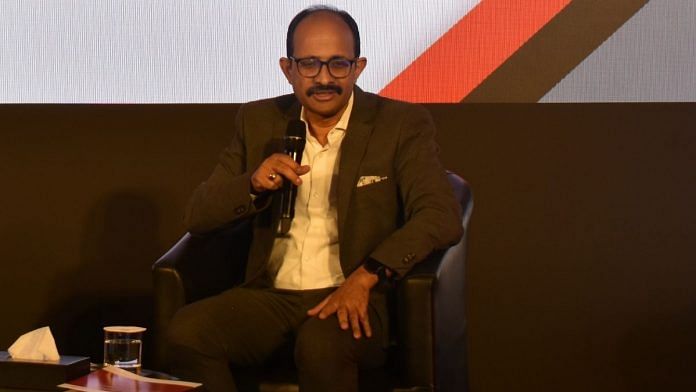New Delhi: Increasingly, climate risks will have to be factored into infrastructure investments. But this is challenged by a risk assessment method that is fast becoming obsolete in the face of climate change, says Kamal Kishore, Member-Secretary of the National Disaster Management Authority and co-chair of the global Coalition for Disaster Resilient Infrastructure’s (CDRI) executive committee.
Worldwide, investments in climate adaptation – which includes building climate-resilient infrastructure – are lagging because of perceived risks and lack of returns. This has been particularly debilitating for low and middle-income countries that are most vulnerable to climate change, and whose economies still need to build.
The CDRI, which held its fourth international conference earlier this month, seeks to provide knowledge and tools to help countries build structures that can withstand the impacts of climate change.
Kishore is optimistic that a solution will emerge soon, necessitated by the urgency of the climate crisis.
“Traditional risk assessments are done on the basis of what we have seen in the past. And while we have future climate projections available, you require much finer resolution. There are a lot of uncertainties at the local level,” he told ThePrint.
“If a financier is putting in money into an infrastructure project, they would obviously want to know, what is the risk? That’s where you need more sophisticated, continually improving risk assessments. And you have to have other solutions besides risk assessment. For example, can we create a pool of assets and then distribute the risk? There has to be some innovation in that space,” he added.
The CDRI, formed in 2019, has launched two projects – one aimed at improving Odisha’s cyclone-hit power grid, and the other at assessing the climate resilience of airports around the world. Kishore says one important finding is that, without upgrading the infrastructure itself, better coordination between departments can save lives – and livelihoods.
“When you know that a cyclone is approaching you switch off the grid, stockpile spare parts like poles and transmission wires, you have a roster of people, a set of working hands who can do the restoration, you have a standing arrangement with your neighboring states to provide more people for work. We found that if you did that, you can reduce the disruption time significantly.”
Also read: India’s heat risk interventions still new. Heatwave in 2022 shows it needs to learn fast
Need to scale up disaster management
The NDMA is India’s apex body for disaster management and gets into action during floods, droughts, heatwaves, cyclones, and six other types of disaster events. With the frequency of such events increasing, Kishore said disaster management services are now needed on a larger scale.
“Yes, of course, we need more boots on the ground, but those boots on the ground don’t have to come from outside, they have to exist at a community level. There is a concept of the golden hour in rescue operations – you can save the most lives within the first hour of a disaster striking than the subsequent ones. The golden hour can only be capitalised at a local level,” Kishore said.
His idea is to expand the already existing Aapda Mitre scheme – which has so far trained 5,500 volunteers from India’s most flood-prone districts – to other types of disasters as well. Volunteers are taught basic, but lifesaving, rescue skills that aid state and national disaster efforts, and Kishore hopes they will number 100,000 over the next few years.
The NDMA also hopes to make early warning systems more impact-based and less “phenomena based,” Kishore said.
“Knowing that a cyclone is traveling at such and such speed is interesting, but how many houses will this destroy, how many trees will be uprooted?” he said, adding, “Our emphasis is to focus on reducing exposure where we can, and if that isn’t possible, to build in a way that can withstand the hazard.”
Also read: A summer like no other? Not really. India has seen worse heat waves
Predicting cascading disasters, a challenge
In February 2021, a deluge caused by a rock and ice avalanche in the Chamoli district of Uttarakhand killed over 80 people and left 124 missing. It was an example of what’s called a cascading disaster, in which one event triggers multiple disasters. In a recent report, the NDMA said a lack of early warning systems in the area contributed to the scale of the disaster. Cascading disasters will be on the rise as global warming accelerates, the IPCC has warned.
“It is possible to predict these individual events; you may be able to predict a landslide. But whether that landslide will create a lake is very difficult to predict. If there’s a lake, what is the likelihood of it breaching? These kinds of disasters require a very strong local-level knowledge. This is one area that’s a real challenge, and we will have to work on in the future,” he said.
(Edited by: Manoj Ramachandran)
Also read: What are wet bulb temperatures, and why they probably won’t cross 35°C long enough to be lethal






